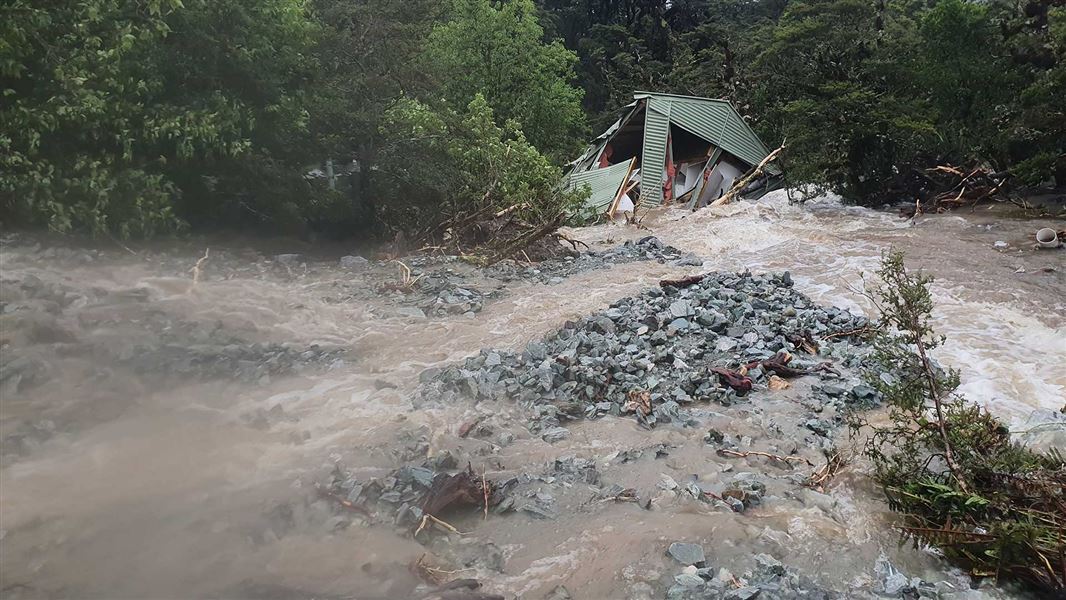Climate change is a significant risk to New Zealand’s native species, ecosystems, outdoor recreation, and cultural heritage. New Zealand is already experiencing some predicted climate changes. These changes are expected to worsen in the coming decades and include:
- warmer temperatures
- changes in rainfall patterns and rainfall intensity
- more extreme weather events.
DOC has an important role in understanding how our natural environment will respond to climate change and how we should manage this.
Risk of climate change to native species
As the effects of climate change increase, threatened species will become even more vulnerable.
The rate of change in our climate is very fast compared to the historic change species have experienced, and many species won't be able to adapt in time. Many native species also lack the ability to adapt to the impacts of climate change at the rate expected and may need support.
Species which may need help are those that:
- are highly specialised, for example, tuatara
- have reduced genetic variation because of a limited number of breeding pairs, for example, little spotted kiwi, takahē and black robin
- have limited distribution, for example, rock wren, black-eyed gecko and Archey’s frog
- are reliant on the sea’s food resources, for example, rockhopper penguins and wandering albatross.
Other threats to native species
How our native species and ecosystems respond to climate change is complicated by other threats, such as invasive pest species and human-related habitat loss.
Invasive pest species may benefit from climate change. For example, pest species such as hedgehogs, ship rats and wasps may increase in range and abundance. This will then impact native species.
Changes in land management practices by other sectors adapting to climate change could affect native species. For example, building sea walls to protect coastlines from storm surges and sea-level rise will impact coastal ecosystems.
Climate change effect on vulnerable ecosystems
All of our native species and ecosystems will eventually be affected by climate change, either directly or indirectly. Some ecosystems will be more vulnerable like alpine, freshwater, and coastal ecosystems.
Alpine ecosystems
Alpine ecosystems are refuges for many of our bird, lizard and invertebrate species. These ecosystems also contain a great diversity of plant species.
Increased animal pest pressure like hedgehogs, rats, and wasps is expected in both the short and long term. In the long-term alpine zones will also experience increased woody growth as tree lines and scrub move upslope.
Freshwater ecosystems
Freshwater ecosystems will also be particularly vulnerable because they are already subject to high levels of land use pressure like dams and irrigation. Native freshwater plants and animals will be impacted by climate change directly and indirectly. Direct climate change effects include increased flood frequency and drought Indirect climate change effects include increased irrigation, pests and weeds.
Coastal ecosystems
Coastal ecosystems include estuaries, coastlines, and offshore island habitats. Rising sea levels will squeeze our coastal native ecosystems against developed land. Storm surge and increased sedimentation as a result of increasing flood frequency will also affect these ecosystems.
Risks to outdoor recreation and heritage
Recreational experiences are being impacted by an increased frequency and intensity of severe weather events and rising sea levels.
The coastal flooding risk will increase as sea levels continue to rise. Scientists predict that sea levels are likely to rise by at least 0.5 – 1 m by the year 2100. DOC research shows hundreds of DOC locations and assets are at risk of coastal flooding from storm surges and extreme tides. These locations and assets include:
- coastal tracks
- ecologically important sites
- car parks
- boardwalks
- historic cultural sites.
High-intensity rainfall events are already impacting on tracks and other infrastructure. For example, at locations such as Queenstown, Fiordland, and Aoraki/Mount Cook.
More information
Resources from National Institute of Water and Atmospheric Reserve (NIWA):
- NIWA information on climate change
- Climate change projection maps and data
- Climate change information for climate solvers
United Nations body for assessing the science related to climate change
